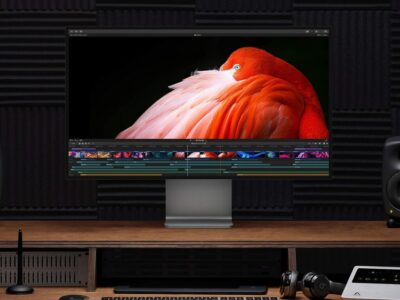In the recent YouTube video by The Editing Podcast, Barney Pilling, Wes Anderson’s longtime video editor shares his approach to his craft. In this great source of knowledge, you will discover what it takes to create masterpieces like “The Grand Budapest Hotel,” “Isle of Dogs,” and most recently, “Asteroid City”. And since you may not have the time to watch the whole video, we prepared some notes for you, so enjoy and prepare to get inspired.
“That’s the kind of movie that I like to make, where there is an invented reality and the audience is going to go someplace where hopefully they’ve never been before. The details, that’s what the world is made of.”

Timing is Everything
At the heart of Anderson’s editing process lies a keen sense of timing. Pilling describes Anderson’s approach to timing as akin to a metronome that only the director can hear. Each scene is meticulously crafted to achieve the perfect rhythm and pacing, ensuring that every moment resonates with the audience.
Pilling emphasizes the importance of sound design in setting the tempo for Anderson’s films. By carefully layering sound elements, from dialogue to music to ambient noise, Pilling creates a rich sonic landscape that enhances the emotional impact of each scene.
“One of the most talked-about styles in cinema today”
Anderson’s distinctive visual style, characterized by symmetrical compositions, vibrant colors, and meticulously designed sets, is often the focus of discussion among cinephiles. However, Pilling points out that Anderson himself doesn’t consider his style to be a deliberate choice but rather a natural extension of his storytelling sensibilities.
“For Wes, it’s all about the words, the characters, and the story,” Pilling explains. “The visual style is just a means to an end—a way of bringing his unique vision to life on screen.”
Creating the Perfect Moment
One of the hallmarks of Anderson’s films is the way he imbues even the simplest moments with emotional depth and resonance. Pilling reveals that achieving these moments often requires careful manipulation of timing and pacing in the editing room.
“We’re always looking for those little moments of magic—the pauses, the glances, the subtle gestures—that elevate a scene from good to great,” says Pilling. “It’s about finding the perfect balance between dialogue, music, and visual imagery to create a truly unforgettable cinematic experience.”
In films like “Asteroid City,” which explores themes of grief and loss, these moments take on added significance. Pilling describes how Anderson’s unique editing style allows him to delve into the emotional core of the story, touching audiences in ways that are both profound and deeply personal.
“Ultimately, it’s not until Wes is happy with the scene that we know the timing’s right,” says Pilling. “His instinctive understanding of rhythm and pacing is what sets his films apart and makes them so compelling to watch.”

Film Composition Examples
Within this FREE PDF, you will discover:
- film composition examples in movies
- how filmmakers employ composition techniques
- how to create unforgettable cinematic experiences

The Art of Collaboration
Behind every great filmmaker is a talented team of collaborators, and Anderson is no exception. Pilling highlights the collaborative nature of the editing process, where he works closely with Anderson to bring his vision to life on screen.
“We’re constantly bouncing ideas off each other, experimenting with different techniques, and pushing the boundaries of what’s possible,” says Pilling. “It’s a creative dialogue that’s rooted in mutual respect and a shared passion for storytelling.”
From crafting intricate stop-motion animations to seamlessly blending live-action footage with visual effects, Pilling and his team spared no effort in realizing Anderson’s vision. Their dedication to the craft shines through in every frame, creating a cinematic experience that is both visually stunning and emotionally resonant.
Looking Ahead
As Anderson continues to push the boundaries of filmmaking with each new project, Pilling remains committed to mastering the art of video editing and bringing Anderson’s vision to life on screen. With each collaboration, he gains new insights and experiences that enrich his craft and inspire him to new heights of creativity.
“In the end, it’s all about telling a great story and connecting with the audience on a deeper level,” says Pilling. “Whether it’s through the timing of a scene, the composition of a shot, or the emotional resonance of a character, our goal is always the same: to create something truly memorable.”
As audiences around the world eagerly await Anderson’s next cinematic masterpiece, one thing is clear: the art of video editing will continue to play a central role in bringing his unique vision to life on screen. And with talents like Barney Pilling at the helm, the future of filmmaking looks brighter than ever before.
And if you wonder how to become a video editor, check out this guide with free courses.
Film Composition Examples
Within this FREE PDF, you will discover:
- film composition examples in movies
- how filmmakers employ composition techniques
- how to create unforgettable cinematic experiences

Explore related content

Video Editing Tips CapCut: Tips, Tricks, and Techniques
Video editing is an art, and there are proper tools and techniques, through them everybody… Read More »Video Editing Tips CapCut: Tips, Tricks, and Techniques

Factors to Consider Before Buying a Video Editing Computer
From helping grow your brand and business to editing just for fun with the love… Read More »Factors to Consider Before Buying a Video Editing Computer

Best Video Editing Monitors in 2024
In the evolving world of video production, the importance of a high-quality monitor cannot be… Read More »Best Video Editing Monitors in 2024